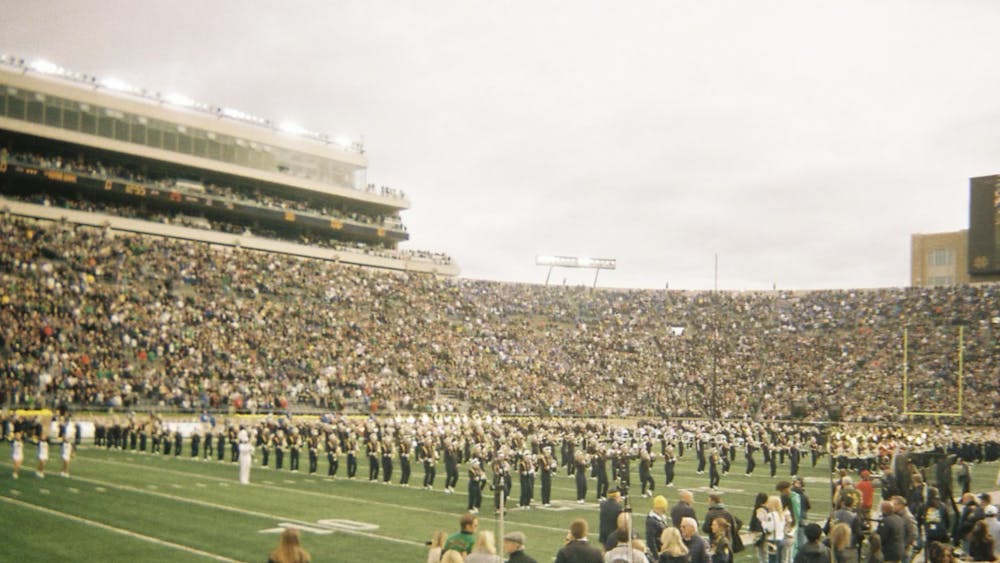What do you eat every day, and where is it from? Farmers in England reported that students who visit their farms assume carrots grow on trees and get confused when presented with the fact that beef and milk come from the same animal.
Let's connect ourselves to what in the past five years has been the societal parallel to the technical green revolution that gave the world the capacity to support seven billion people. As Americans, we micro-eat rather than macro-eat. Countless Web sites and products divulge calories, fat, protein, vitamins, etc. in most foods that are sold in stores, but try searching where the ingredients of those products come from and only a few recent documentaries show up. What are we eating?

Let's go through just one lunch. We'll call the outcome your "foodprint." (Try saying that with a German accent, it makes the joke funnier.)
You make a sandwich of wheat bread — made from wheat from Indiana and yeast made from molasses, which was made from sugar cane grown in Brazil on former tropical forest land, poor in nutrients and only temporarily farmable after the forest's clearing.
Your chicken likely came from North Carolina on a chicken farm where thousands of other chickens lived for 81 days in the same crowded chicken house, fed antibiotics and Vitamin D-rich feed that allows the chickens to live longer. Before the 20th-century chickens struggled to live in less sunny times of the year, they were a seasonal food.
Your tomato came from South Florida, picked by migrant workers — a dispensable workforce for agricultural companies, for these people have hardly any rights in America. Your banana came on a diesel tanker from Ecudaor, your eggs in your chocolate-chip cookie were trucked in refrigeration from Iowa. Food comes from all over, and scores and scores of people are involved in the production processes.
A recent Swedish study in the journal Ecological Economics calculates the energy it takes for food to grow and get to your plate versus the energy you get from eating it. For every food item, they calculated the to-your-plate energy through considering fertilization, soil degradation, clearing for farms, fuel to harvest/plant the food and to get it to market, as well as the energy needed for you to bring the food home, store it and cook it. These scientists found that one serving of beef takes 9.4 megajoules to get to your dinner plate, yet when it arrives, it provides you with only 0.8 megajoules (191 calories). Chicken gets you the same amount of calories for only half the energy investment, while potatoes provide in nutritional energy more than 50 percent of the energy it takes to grow and transport them.
A similar study from Great Britain concluded that the energy invested in producing and transporting one week's worth of food for one person is roughly five times greater than the amount of energy the eater gets from the food. About one-sixth of that input is home storage and another one-sixth is home cooking. Thus, eating more uncooked fresh foods or not relying heavily on the fridge could significantly decrease the energy used to get your food to you.

And after you figure out where all that food came from, how your bananas were shipped from Ecuador to San Diego on a giant tanker then trucked 2,100 miles to South Bend, Ind., think about how many times you failed to actually eat that food. You left your banana in the room or your bag, and then decided the brownish-green, unseasonable and unappetizing curve of a fruit should be thrown out. We throw out food that traveled upwards of 5,000 miles to get to us because we don't feel like eating it, and thereby not only contribute to landfill issues, but also waste water.
Water waste is intricately tied to food waste because of the amount of water agriculture demands. Dr. Emerson Nafziger at the University of Illinois estimates that growing one acre of corn even in the fertile Midwest needs 250,000 gallons of water.
At World Water week in Stockholm this past year, scientists calculated that America wastes about 30 percent of its produced food, worth approximately $48.3 billion. That much food waste equates to about 40 trillion liters (10.5 trillion gallons) of water waste, which could provide water for 500 million households — roughly five times the number of households in America.
Wasting food becomes a human rights issue.
Wasting food wastes water. We can fundraise to build wells in Africa as long as we want, but not finishing your meal wastes far more water and money than we contribute to foreign nations. The fact remains that we cannot merely ship our water to them, but the pollution from our agricultural runoff causes other issues for poor Central American nations. Our wasted food contributes to agricultural runoff that creates nitrogen-rich dead zones in our oceans and brain development problems in our children.
When we waste food we waste oil. The oil itself causes air pollution in the form of CO2, smog and particulate matter, while the lust for it — so that we can get our kiwi and Argentinean beef promptly — causes wars and kills citizens of nations all over the world.
Throwing away out-of-season produce causes a higher demand for that produce. Thus, more under-paid and under-valued workers are exploited as migrant workers by huge agricultural industries.
Eating mindfully can significantly expedite aid many of the world's human rights issues. If we know what is in season, where our food came from and how it got there, we appreciate it in a different way. Only then do we finish our food, take what we can eat and not waste the massive efforts of people, animals and the earth that it took for the food to get to us to support our very lives. Wasting less food can help the earth and the people on it who are suffering not by transferring the food to them per se, but by minimizing the strains of its production. Think about that next time you throw away half your meal in the dining hall.
Jackie Mirandola Mullen is a senior history and German major. She encourages you to pick a favorite crop (hers is the potato). You can reach her at jmirando@nd.edu
The views expressed in this column are those of the author and not necessarily those of The Observer.












